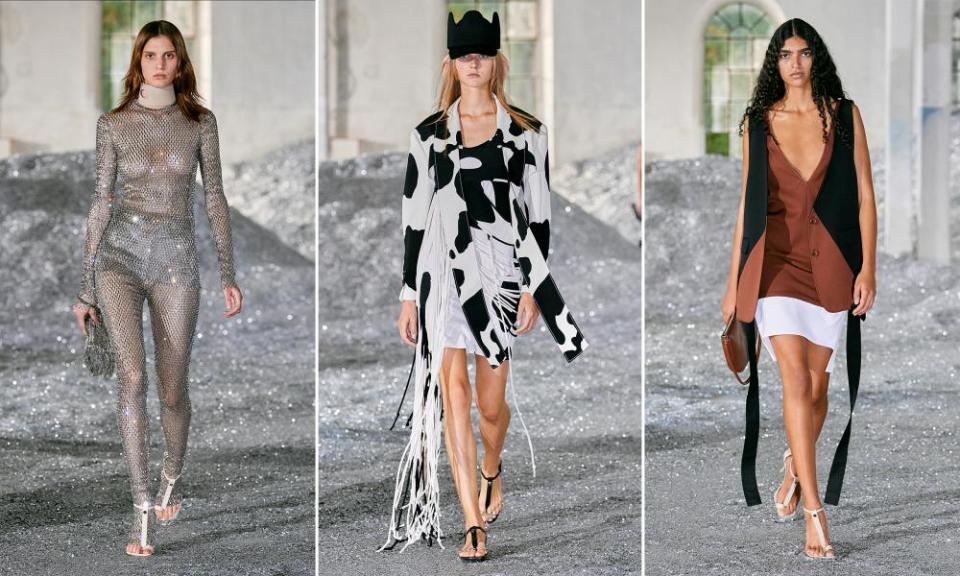Burberry’s post-pandemic show: surrealist wit and arcane execution

Burberry has unveiled its first post-pandemic fashion show, and it seems its departing CEO’s vision remains intact.
Four months after the shock announcement from Marco Gobbetti, who leaves at the end of the year, his prescient positioning of the brand as a go-to destination for rich, young consumers looks likely to outstay him.
Along with creative director Riccardo Tisci, he added streetwear aesthetics and pop culture nous to a fashion brand whose heritage had, before his appointment, almost calcified into staid irrelevance.
The decision to begin the digital show outside London fashion week, which ended last week, was a declaration of independence and a newfound financial solvency.
The strategy, which was formed when Gobbetti took over from Christopher Bailey in 2017, has been mirrored by Tiffany with its recent rebrand with Jay-Z and Beyoncé. It has helped Burberry recover from the losses wrought by coronavirus, which was borne out in figures released in July.
With surrealist wit and arcane execution, Tisci explored how our pandemic love affair with nature has affected our lives. Models wore goblin ear prosthetics, equestrian-like helmet-hats, harnesses and breastplates, as well as deconstructed versions of the classic Burberry trenches.
Cow prints and faux fur were also a big feature of the show, playing on the theme of therianthropy – the idea that humans can metamorphose into an animal form. As the models walked through urban wastelands such as derelict buildings, museums and raves, the click-clack of their heels could also be read as a comment on life during lockdown and the strangeness of the return to normality.
The focus on the outdoors is also a savvy business decision: during the pandemic, outdoorwear became hugely popular. For example, a quilted jacket from the North Face became a must-have item (after its popularity on TikTok), while celebrities such as Hailey Baldwin and Timothée Chalamet ushered in an era of “sexy fleeces”, with internet searches rising by 400%.
Monday’s show was yet another example of the Gobbetti-Tisci era, even if the former is due to leave. It displayed modernism (TikTok-led trends like gorpcore, outdoors clothes worn as fashion items, and goblincore, a celebration of the tactility of nature) while keeping a classic Burberry feel.
Despite its judicious use of star power – Kendall Jenner, FKA twigs and Marcus Rashford have all featured recently – the show was evidence that it can just let the clothes do the talking.

 Yahoo Finance
Yahoo Finance 